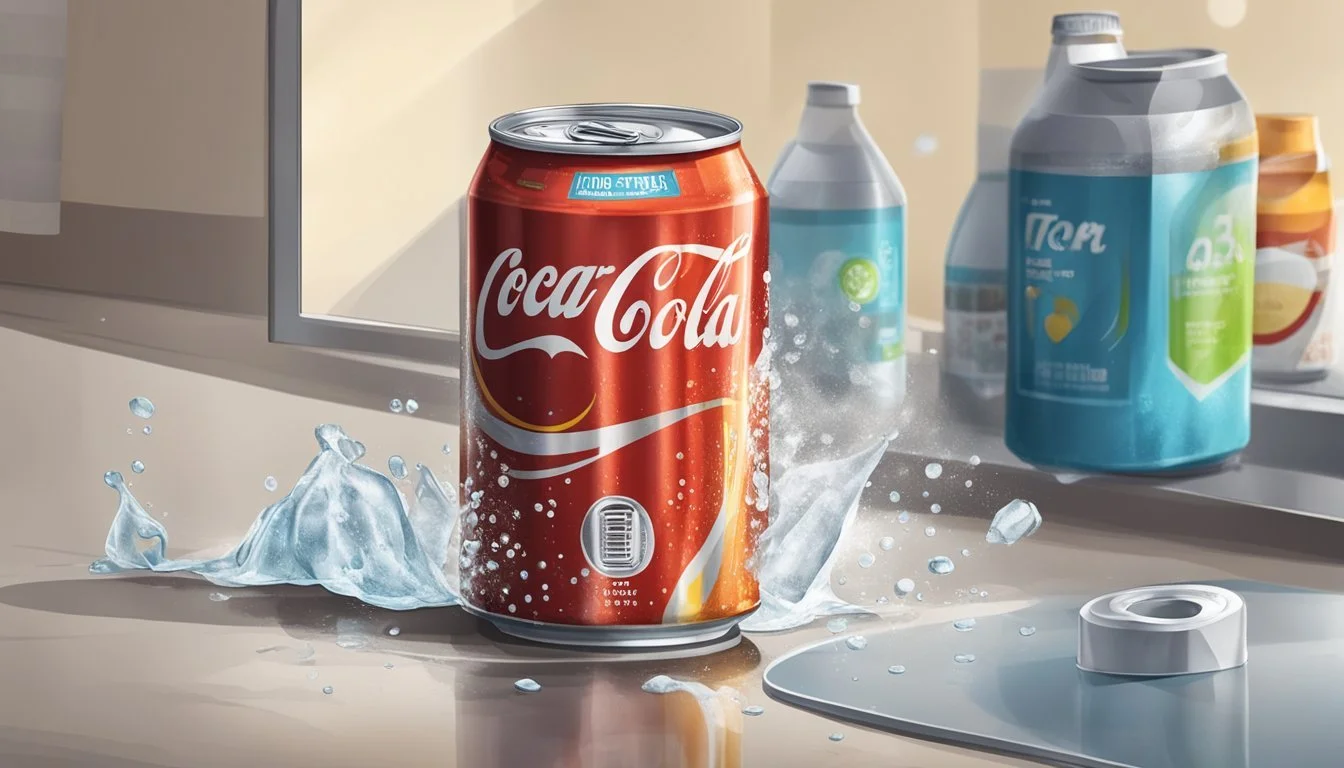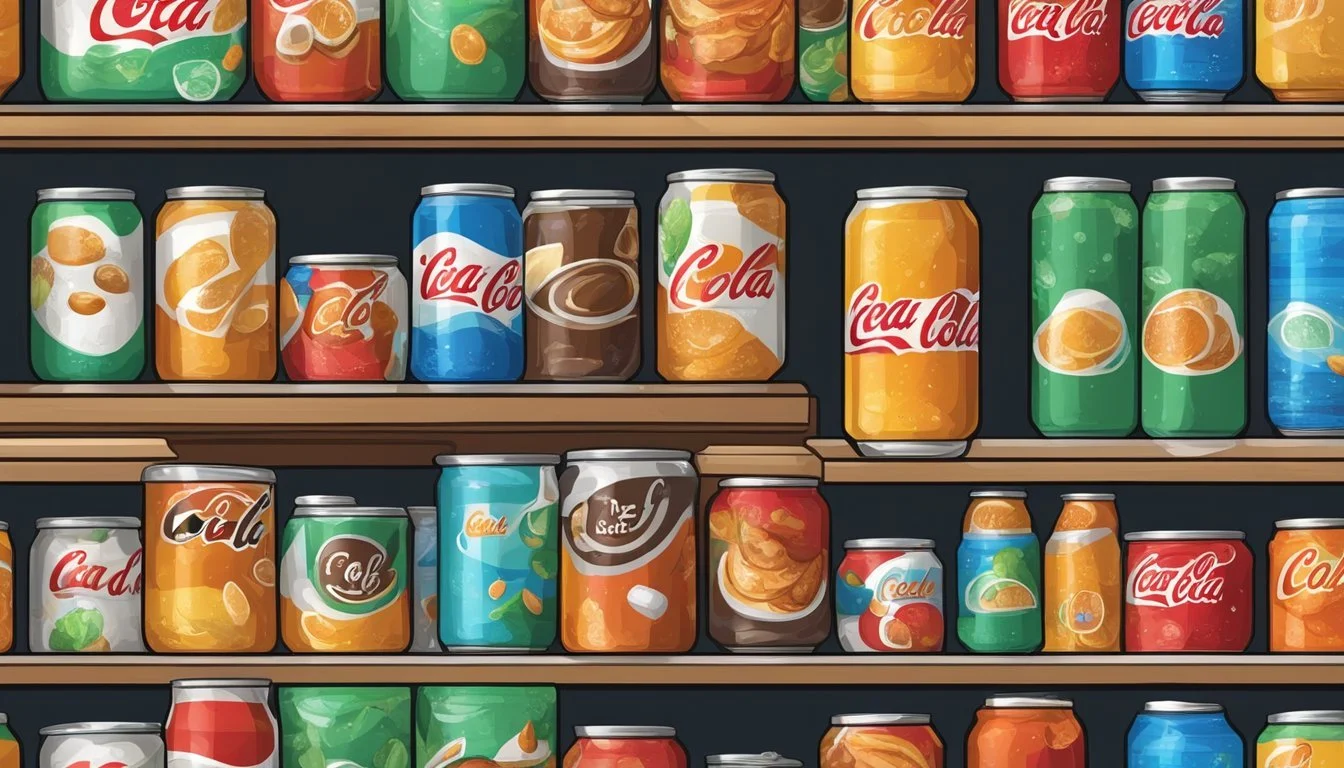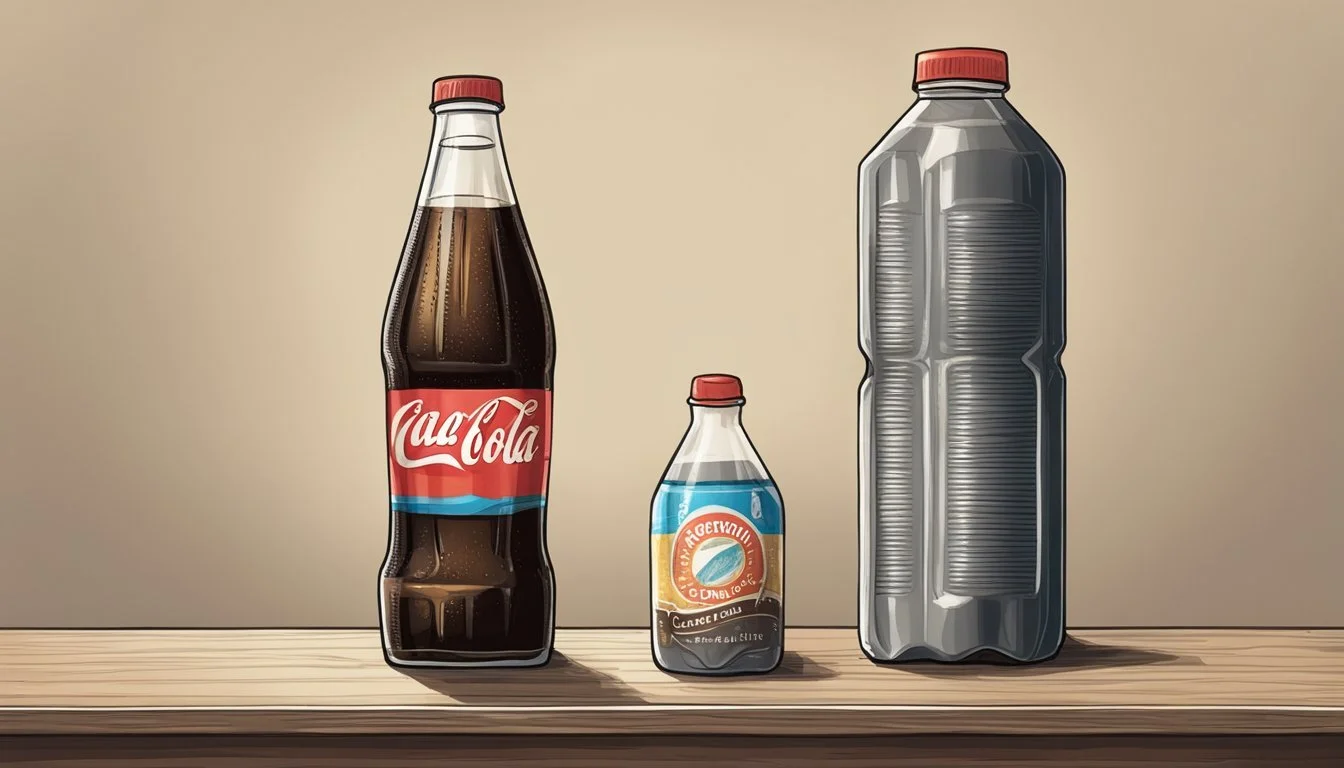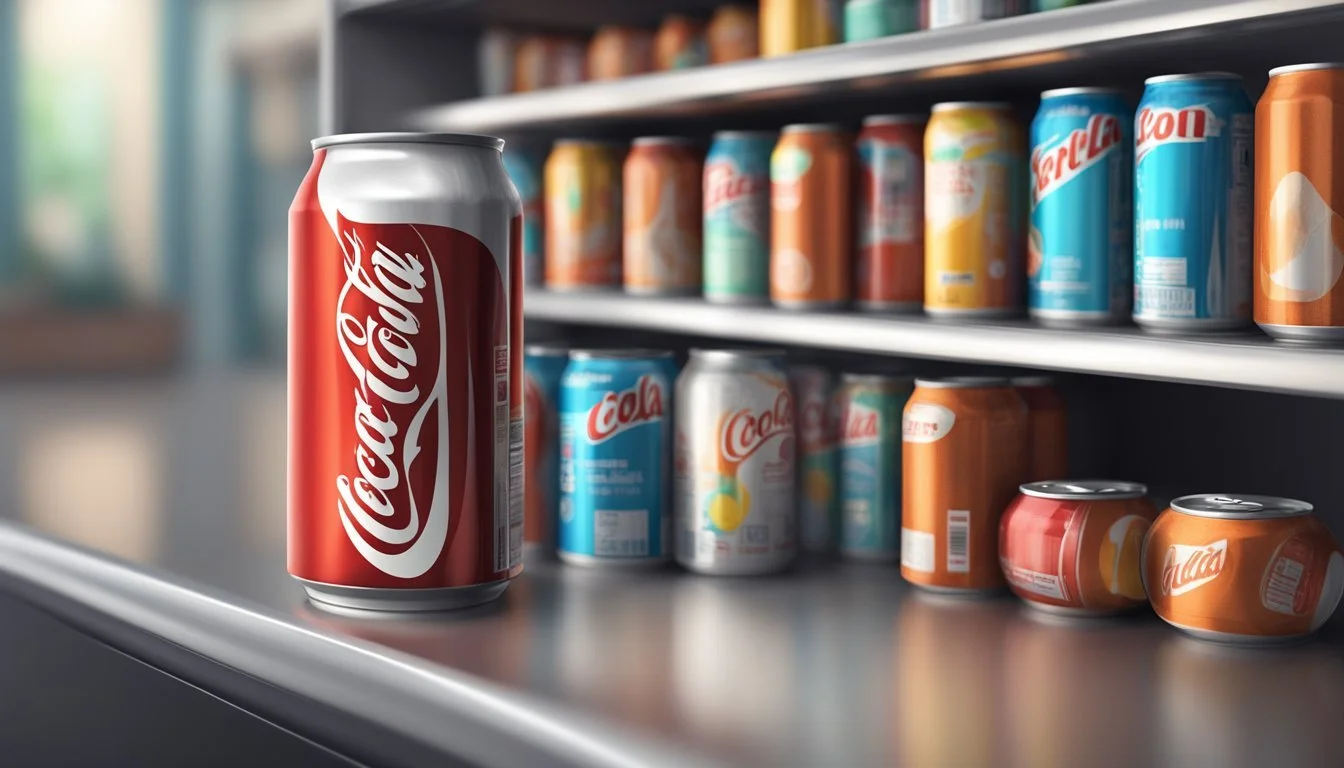Does Cola Expire?
Understanding Shelf Life and Storage
Cola, a popular soft drink, often raises questions about its shelf life and whether it can expire. Though cola doesn't technically "expire" in the way perishable foods do, it does have a 'best by' date that indicates the period for optimal taste and quality. Regular sodas can maintain their best quality for about 9 months past this date, while diet sodas are best enjoyed within 3 months.
Cans and bottles of cola, if unopened and stored properly, can remain drinkable for a considerable time after the indicated date. Still, caution is advised with any sign of contamination, such as bulging or discoloration. It's also important to understand that while the soda may not make you sick, its flavor and carbonation can deteriorate over time.
For those who wonder if they should toss out a can of cola just because it's past its 'best by' date, the answer lies in assessing its storage conditions and any visible signs of spoilage. As long as the cola looks, smells, and tastes as expected, it remains an acceptable beverage choice.
Understanding Cola and Its Components
Cola comprises several essential elements, including ingredients, preservatives, sugars, and artificial sweeteners. Each plays a crucial role in the flavor, preservation, and overall quality of the drink.
Ingredients and Additives
The primary ingredients in cola include carbonated water, high-fructose corn syrup or sugar, caramel color, phosphoric acid, natural flavors, and caffeine. These ingredients are blended to create the unique taste characteristic of cola beverages like Coke.
Key Additives:
Caramel Color: Provides the dark color.
Phosphoric Acid: Adds tartness.
Caffeine: Offers a stimulating effect.
Natural Flavors: A trade secret, which can include various botanical extracts.
These additives are meticulously balanced to ensure flavor consistency and consumer satisfaction.
Role of Preservatives in Soft Drinks
Preservatives play a pivotal role in maintaining the shelf-life of cola. Common preservatives include sodium benzoate and potassium sorbate. These chemicals inhibit the growth of mold, yeast, and bacteria, ensuring the drink remains safe to consume over time.
Common Preservatives:
Sodium Benzoate: Prevents microbial growth.
Potassium Sorbate: Extends shelf-life by combating yeast and molds.
Without these preservatives, cola would have a much shorter shelf life and could pose health risks since sugars and water provide an ideal breeding ground for microorganisms.
Sugar Content and Artificial Sweeteners
Cola beverages are known for their high sugar content, primarily from high-fructose corn syrup or sucrose. In response to health concerns, many brands now offer products with artificial sweeteners like aspartame, sucralose, and acesulfame potassium.
Sugar in Cola:
High-Fructose Corn Syrup/Sucrose: Main source of calories.
Artificial Sweeteners: Low-calorie alternatives.
These sweeteners are designed to provide the same level of sweetness without the high-caloric impact, catering to health-conscious consumers who still want to enjoy the taste of cola.
Cola Storage Guidelines
Proper storage of cola helps maintain its quality and extends its shelf life. Key factors include storage conditions, temperature, and light exposure.
Optimal Storage Conditions
To preserve the quality of cola, store it in a cool, dark place. Keeping cans and bottles upright prevents leakage. Airtight containers or the original packaging protect against external factors. Glass and aluminum containers are preferable over plastic. If transferring cola, use food-grade containers and seal them tightly. Exposure to air can deteriorate the beverage, making airtight storage essential.
Effects of Temperature and Light Exposure
Temperature plays a crucial role in cola storage. Ideal storage temperatures range between 50°F and 70°F. High temperatures can cause the liquid to expand, leading to leaks or bursts. Additionally, light exposure, especially sunlight, can degrade the quality. UV light speeds up the breakdown of carbonation and flavor compounds, making the cola taste flat.
Therefore, storing cola in a dark place, away from direct light, is vital. Wrapping glass bottles in aluminum foil can offer added protection from light.
Refrigerating versus Storing at Room Temperature
Refrigeration helps maintain the flavor and fizz of cola for a longer period. Keeping cola in the fridge at temperatures between 36°F and 38°F slows down the degradation process. However, if refrigeration isn't an option, ensure the cola is stored at a consistent room temperature.
Frequent temperature fluctuations can negatively affect carbonation. For short-term storage, a pantry or cupboard works well. For long-term storage, refrigerating sealed containers is the best practice.
Proper storage techniques ensure that your cola remains enjoyable, retaining both its taste and fizziness.
Shelf Life of Cola
Cola beverages, both diet and regular, have varying shelf lives influenced by the presence of preservatives, storage conditions, and packaging integrity. It's important to understand the differences in expiration and best-by dates and how they impact the quality and safety of the product.
Expiration Date and Best-By Date
Cola products typically do not come with an expiration date but rather a best-by date. This date indicates the period during which the product is expected to retain its best flavor and quality.
For example, Coca-Cola suggests a best-by date instead of an expiration date. After this period, the taste might deteriorate, but the drink is usually still safe to consume if stored properly.
Diet sodas have a shorter best-by date compared to regular sodas because the artificial sweeteners they contain can break down faster. It's crucial to refrigerate opened bottles and cans to extend their usability.
Differences Between Diet and Regular Sodas
Regular sodas, like Coca-Cola and Pepsi, usually last longer than diet sodas because they contain sugar, which acts as a more stable preservative. Diet sodas, such as Diet Coke, often have a best-by date within 3-6 months of production due to the less stable nature of artificial sweeteners.
Storing sodas in a cool, dark place can extend their shelf life. However, exposure to high temperatures and bright light can significantly reduce their quality.
Mountain Dew and similar caffeinated beverages also follow these guidelines. Their unique ingredients do not substantially alter their shelf life compared to other cola products.
Shelf Life Duration for Various Cola Brands
Different cola brands have varying shelf lives based on their ingredients and manufacturing processes. Coca-Cola and Pepsi generally recommend consuming their products within 6-9 months of the best-by date for optimal flavor.
Here's a quick reference table:
Brand Unopened Shelf Life (Best-By) Opened Shelf Life Coca-Cola 6-9 months 3-4 days Diet Coke 3-6 months 1-3 days Pepsi 6-9 months 3-4 days Mountain Dew 6-9 months 3-4 days Gatorade N/A (not a cola) N/A (not a cola)
After opening, soda should be consumed within a few days to maintain carbonation and flavor. Proper sealing and refrigeration can help preserve its taste and quality.
Detecting Spoilage in Cola
Detecting spoilage in cola involves both observing visual changes and noting any off odors. Additionally, changes in flavor and carbonation can indicate that the drink may no longer be enjoyable to consume.
Visual and Olfactory Indicators
Visual cues are often the first signs of cola spoilage. A bulging bottle or can indicates excess gas buildup, suggesting microbial activity. Cloudiness or unexpected sediments are also red flags. The cola should be clear; any deviation signals possible spoilage.
The sense of smell is a powerful tool for detecting spoilage. Off odors such as sour, musty, or overly sweet notes are clear indicators. Normal cola should smell sweet and slightly acidic. If it smells unusual or excessively pungent, it's best not to drink it.
The Impact of Expiration on Flavor and Carbonation
Expired cola can still be safe, but it often lacks the fizz and flavor typical of fresh soda. Carbonation loss results in a flat drink, making it less pleasant. Taste is another key indicator. An expired cola may taste stale, metallic, or overly sweet, deviating from its characteristic flavor profile.
Although the expiration date usually denotes optimal quality, cola past this date may still be drinkable. However, significant changes in taste or carbonation typically imply that the drink has exceeded its best-by period, impacting the overall cola experience.
Health Considerations and Risks
Expired cola poses health risks related to its chemical composition degrading over time and its high sugar content impacting diet and nutrition.
Potential Health Risks of Expired Cola
Expired cola may still be safe to drink but can present various health risks. Spoiled drinks pose threats of foodborne illness due to potential contamination. Signs of spoilage include bulging bottles, discoloration, and off odors. Consuming spoiled cola can result in upset stomach or nausea.
Chemical degradation in expired cola can also cause an altered taste and diminished carbonation. While typically not harmful, the breakdown of ingredients can sometimes lead to unexpected side effects. It’s best to err on the side of caution and avoid drinking cola that shows physical signs of spoilage.
The Relationship Between Sugar, Diet, and Health
Cola's high sugar content remains a significant health concern. Regular consumption of high-sugar beverages like cola is linked to obesity, poor blood sugar control, and type 2 diabetes. Studies have shown that even consuming one soda per day can increase these health risks considerably.
Frequent intake of sugary drinks is associated with high blood pressure, high cholesterol, and cardiovascular diseases. The nutrition and dietetics community advises moderation in soda consumption to maintain better health outcomes. Opting for sugar-free alternatives or reducing overall intake can mitigate these risks and contribute to a healthier diet.
Utilizing Expired Cola
Expired cola, though no longer ideal for drinking due to diminished taste and reduced effervescence, can still serve several practical purposes around the house. From cleaning to cooking, there are various ways to make the most out of an unopened can past its best-by date.
Alternative Uses for Cola Past Its Expiry
Cleaning Agent: Expired cola can effectively clean tarnished items due to its acidity. The carbonation and acidity help remove rust from tools and other metallic objects. It can also be used to clean toilets, countertops, and even the grout on tiles.
Baking Ingredient: In recipes, expired soda can replace water or other liquids to add a unique flavor. The CO2 in cola aids in the leavening process, making cakes and breads fluffier. It can also be used in marinades for meats, tenderizing and adding a caramel-like flavor.
Gardening Help: Pouring expired cola around acid-loving plants, such as tomatoes and azaleas, can lower soil pH levels. This helps improve the nutrient uptake of these plants. Additionally, a small amount can boost compost decomposition due to the sugars and acidity chemically breaking down organic material faster.
Food Photography: The bubbles in carbonated soft drinks like cola add an interesting element to food photography. Using expired cola that still has some effervescence can help bring a beverage to life in images.
Expired cola remains a valuable resource beyond its drinkable life, providing a range of useful applications.
Professional Insights
Drinking expired cola can pose certain quality concerns but generally does not pose a health risk. This section provides insights from experts about cola consumption.
Expert Opinions on Cola Consumption
Nutrition and dietetics expert Kimberly Baxter emphasizes that while cola might not expire in the traditional sense, its quality can degrade over time. She points out that unopened soda can retain its peak taste for up to nine months if properly stored.
Wholesome Foods, a company known for its focus on high-quality ingredients, advises that the expiration label should be taken seriously for the best sensory experience. Flat or altered taste is a sign that the cola is past its prime, though not necessarily unsafe to drink.
Taste Considerations:
Diet Sodas: Best quality for about 3 months past the best-by date.
Regular Sodas: Retain best quality for up to 9 months.
Storage Tips: Store cola in a cool, dark place to extend its shelf life according to studies on preservatives in coke syrup.
It is crucial for consumers to assess their beverages visually and olfactorily. If a soda shows signs of bulging, discoloration, or off odor, it’s best to discard it.








